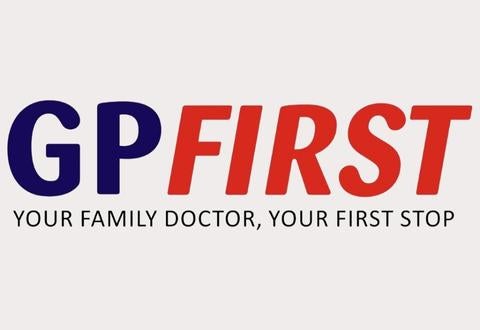Changi General Hospital will NEVER ask you to transfer money over a call. If in doubt, call the 24/7 ScamShield helpline at 1799, or visit the ScamShield website at www.scamshield.gov.sg.
Nursing and nurturing across decades
Having worked at the old Changi Hospital then and now at Changi General Hospital (CGH), Assistant Director of Nursing Liu Li Chu shares about her role in developing nurses and growing capabilities over 40 years.

When Assistant Director of Nursing Liu Li Chu was first posted to the old Changi Hospital in 1980, she was filled with excitement. Little did she know that a big responsibility awaited her in the decades to come. Having just completed her qualifications in Critical Care Nursing, she discovered that she was the only nurse in the hospital trained in intensive care at that point in time.
“My colleagues and supervisors had high expectations of me and I had to work very hard,” recalls Ms Liu. “Fortunately, I had good colleagues who helped me to quickly adapt to the new environment. They were experienced and willing to pick up critical care skills even before full-fledged intensive care unit (ICU)-trained nurses joined the hospital.” During this time, Ms Liu also worked closely with her supervisor on improvements at the ICU to achieve optimal outcomes for patients. She enhanced the patient resuscitation process by implementing intubation kits and introducing a resuscitative medicine kit.
This steep learning curve turned out to be an ideal learning opportunity for her. “Besides delivering nursing care to patients, this also paved the way for me to take on management responsibilities later,” she explains.
The road to Changi
Despite the hectic nature of work in her formative years, Ms Liu still fondly reminisces about her time spent at the old Changi Hospital. “The scenery was something that could not be found at any other hospital,” she says. “Then, I was working at one of the wards on the sixth floor. From there, you could see the sea and Changi Beach, and on the weekends, there were yachts sailing across,” she smiles when recounting the scenic landscape in her younger days. When difficult and painful emotions got the better of her, Ms Liu would look out to the boundless surroundings to help herself relax.

A sight to behold: Ms Liu used to watch the yachts from the long corridor of the old Changi Hospital.
The experience of working with the staff at old Changi Hospital also left Ms Liu with many unforgettable memories. She remembers that the physicians, nurses, allied health professionals and health attendants were very helpful, and worked together as a big family. Ms Liu’s colleagues would also chat about their family lives, share advice on setting up a family and go for outings together. Regular activities such as Family Day, where family members of the staff were invited to telematch games, helped to further foster strong bonds.
At the end of the year, the staff and their family members would have carolling nights and singing events to uplift patients in the hospital. “We also had our yearly Nurses Day celebrations, where nurses of all levels and roles would participate in with gusto, reflecting the close-knit relationship of the nursing team,” shares Ms Liu.

At the end of the year, Ms Liu (second from right) and the other nurses would go carolling at the old Changi Hospital wards.

The nurses celebrated Nurses Day together every year.

Old Changi Hospital staff and their family members enjoying themselves at regular family day activities.
Making processes a priority
Although the old Changi Hospital was surrounded by greenery, Ms Liu’s work there was no walk in the park. She quickly recognised the importance of streamlining work processes in the hospital.
One such area was the tracking and storage of consumable items. Every month, the staff would have to check through the ward cupboards to take stock of what was available so they could determine when to order new stock — a highly manual and tedious task.
To simplify the stock-taking process, Ms Liu created an inventory list to keep track of the remaining items. Adopting a ‘countdown method’ — where inventory numbers would be updated accordingly every time someone used an item — improved the efficiency of the process.
Ms Liu also developed a simple but effective system where faulty machines would be labelled “Out of Order” so that staff would know to avoid using them.
Whenever there were new equipment purchases for the ICU, Ms Liu would evaluate the suitability of items. These included equipment such as ventilator machines, defibrillators, continuous cardiac monitoring machines and more.
Developing nursing talents
In addition to enhancing the ward environment, Ms Liu took on more responsibilities in the areas of management and training, where she organised monthly talks for staff and ensured that they were properly trained and upskilled in order to keep pace with the improvements and new practices.
In 1994, the old Changi Hospital recruited its first two batches of overseas nurses from the Philippines and Myanmar. Ms Liu developed orientation booklets and assisted in creating nursing competency checklists to help guide the new nurses on Singapore’s nursing practices. With Singapore being a multi-racial society, Ms Liu encouraged them to learn Hokkien and Malay so that they could communicate effectively with non-English speaking patients.
On to the new
Ms Liu’s stint at the old Changi Hospital came to an end in 1996 when she moved to the New Changi Hospital — now known as CGH — to oversee staff development and talent management. When she had to decide between joining CGH or moving to another hospital, it was the new hospital’s quality statement at that time — “To provide a level of patient care and service good enough for our own mothers”— that set her heart on joining CGH. This statement continues to touch and resonate with her, inspiring her to continue providing trusted care to her patients through her work, and developing nurses professionally and individually.
“I have learnt over the years that leadership is not about being the best, but about helping everyone else become better,” she shares.
Stay Healthy With
© 2025 SingHealth Group. All Rights Reserved.



















